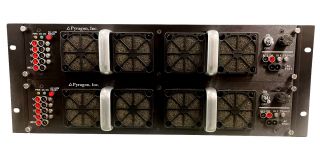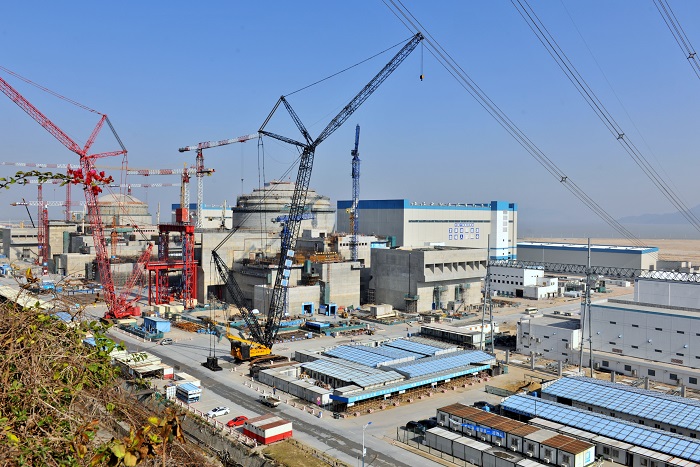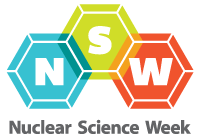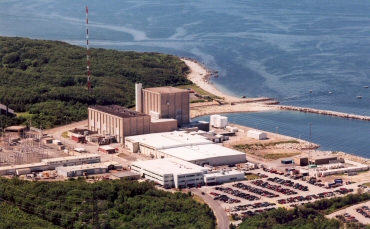A message from PYRAGON and SOR Controls Group
The Advantage of Upgrading Power Supply Infrastructure in Nuclear Power Plants
The ANS Nuclear Cafe is a blog owned and edited by the American Nuclear Society. Information contained on the ANS Nuclear Cafe has been provided by numerous sources. Therefore, the American Nuclear Society assumes no responsibility or liability for the accuracy of information contained herein. DISCLAIMER: The views expressed in posted articles do not necessarily reflect the views of the American Nuclear Society. The views expressed here are those of the individual authors. ANS takes no ownership of their views. The American Nuclear Society assumes no responsibility or liability for any use or operation of any methods, products, instructions, or ideas contained on this site.

A message from PYRAGON and SOR Controls Group
The Advantage of Upgrading Power Supply Infrastructure in Nuclear Power Plants

Taishan EPR under construction; courtesy CGN
•Written on location at the ANS Winter Meeting by Will Davis
It seems so. Recent studies on the biological effects of radiation carried out under radiation levels from natural background to essentially zero radiation, demonstrate that the absence of radiation is not good for organisms (Castillo et al., 2015).
Advanced nuclear reactors will use new types of fuel. To ensure such systems are safe, experimental fuel samples must be fabricated and tested in safe research environments such as those at Idaho National Laboratory.
Although there have been dozens of unique nuclear reactors and nuclear power plants built and operated in the United States, it is perhaps true that the "most unique" of these in many ways was a nuclear power plant that, in a real sense, did not itself actually incorporate a nuclear reactor. This plant was built and operated by the Washington Public Power Supply System, and was known as Hanford One. The story behind it, and the unique reactor that provided steam for it, is at once complicated and fascinating.
 The 285th edition of the Nuclear Energy Blog Carnival has posted at Yes Vermont Yankee
The 285th edition of the Nuclear Energy Blog Carnival has posted at Yes Vermont Yankee
For over a decade, I have been attending American Nuclear Society (ANS) National and Topical meetings both as a student and a young professional. These meetings hold a very special place in my heart and give me the opportunity to participate in a professional and technical venue most closely aligned with my career and goals. However, I am often asked, "What value is there in attending the ANS meetings, and why do you go?" The answer to that question can sometimes be difficult to supply, solely because of the over-abundance of reasons for and value I gain from attending. The short answer is, "I attend because I am a nuclear professional and an advocate for our industry and all nuclear professionals should attend." But the true answer goes deeper than that.
How do you provide power to spacecraft in the deep reaches of space far from the sun? For the past 50 years the United States has been using radioisotope thermal generators (RTG). Deep space missions using RTGs (including the Voyager Spacecraft that was launched in 1977) are currently still transmitting data from distances far beyond Pluto. More recently, the New Horizon's spacecraft was launched in 2006 has just flown by Pluto offering the first images of the dwarf planet close up. RTGs were used on the moon during the Apollo mission with astronauts, the Curiosity rover, the Viking Mars Landers, and more. The United states has launched about 30 spacecraft and landers that have used RTGs for electricity and heat.
An apparently inadvertent set of artificial conditions are combining to sharply restrict the use of nuclear energy in the United States, potentially damaging both our economy and the environment. They are preventing new nuclear plant construction, and even driving existing plants to close. The most recent and glaring example is the Vermont Yankee nuclear unit, which had been a well-run, economical plant that at the beginning of the year permanently ceased operation largely due to cheap natural gas. Thus we traded a large-scale power generator producing essentially zero pollution and greenhouse gases for burning a fuel that emits both air pollutants and significant CO2.
On Monday morning of November 9, during the Opening Plenary at the 2015 American Nuclear Society's Winter Meeting in Washington, D.C., the first Dwight D. Eisenhower Award will be awarded to former Secretary of State George P. Shultz and distinguished physicist Dr. Sidney D. Drell. This award was established in 2014 by ANS's Nuclear Nonproliferation Policy Division (NNPD) to honor individuals who have made outstanding contributions to the advancement of the field of nuclear nonproliferation. It is named after the late Dwight D. Eisenhower, a pioneer who helped nurture the nuclear age to technical and political maturity.
 Turn on a football game this Sunday and you will see very large men in pads slamming into their opponents wearing pink shoes, socks, gloves, and other brightly colored pink garb. A somewhat ironic yet symbolic gesture by the National Football League, one that not only reminds fans that it is Breast Cancer Awareness month, but also reflects the mental and physical toughness of every single breast cancer patient or survivor and their families that have to deal with this frightening disease. As I pointed out in my last blog post on this issue, we have come a long way in terms of diagnosis and treatment, and medical procedures that utilize ionizing radiation deserve much of the praise. However, there is still much that can be done, since more than 230,000 new cases of breast cancer will be diagnosed in 2015 alone.
Turn on a football game this Sunday and you will see very large men in pads slamming into their opponents wearing pink shoes, socks, gloves, and other brightly colored pink garb. A somewhat ironic yet symbolic gesture by the National Football League, one that not only reminds fans that it is Breast Cancer Awareness month, but also reflects the mental and physical toughness of every single breast cancer patient or survivor and their families that have to deal with this frightening disease. As I pointed out in my last blog post on this issue, we have come a long way in terms of diagnosis and treatment, and medical procedures that utilize ionizing radiation deserve much of the praise. However, there is still much that can be done, since more than 230,000 new cases of breast cancer will be diagnosed in 2015 alone.
 The 284th edition of the Nuclear Energy Blog Carnival has posted at The Hiroshima Syndrome
The 284th edition of the Nuclear Energy Blog Carnival has posted at The Hiroshima Syndrome
 The 283rd edition of the Nuclear Energy Blog Carnival has posted at Next Big Future.
The 283rd edition of the Nuclear Energy Blog Carnival has posted at Next Big Future.
 Wednesday during National Nuclear Science Week is devoted to the topic of Nuclear Energy. Do you know how we use the energy obtained by splitting the atom to produce the electricity that charges up your phone, powers your TV and router, and lights your way? Click on the link below to see the basics.
Wednesday during National Nuclear Science Week is devoted to the topic of Nuclear Energy. Do you know how we use the energy obtained by splitting the atom to produce the electricity that charges up your phone, powers your TV and router, and lights your way? Click on the link below to see the basics.
 This year, Nuclear Science Week takes place October 19-23. Always during the third week of October, it's a nationwide event that has been educating people about the importance of nuclear science and technology for the past five years. Many of the associated Nuclear Science Week events, taking place all week throughout the United States, are aimed toward young people to encourage an interest in nuclear science-related careers. This year, the first day's theme will be "Get To Know Nuclear"-a topic kids (and adults) of all ages would do well to learn.
This year, Nuclear Science Week takes place October 19-23. Always during the third week of October, it's a nationwide event that has been educating people about the importance of nuclear science and technology for the past five years. Many of the associated Nuclear Science Week events, taking place all week throughout the United States, are aimed toward young people to encourage an interest in nuclear science-related careers. This year, the first day's theme will be "Get To Know Nuclear"-a topic kids (and adults) of all ages would do well to learn.
The Friday Nuclear Matinee is a short video on the myths and facts of nuclear energy. Please weigh in with comments and questions below about today's video.
ANS Members from Around the World to Gather in D.C. for Winter Meeting
 By Will Davis
By Will Davis
As students in engineering programs, we rarely have the opportunity to learn about, or advocate for, the politics behind the technology that we discover and develop. Although these opportunities are rare, they do exist and one such opportunity is the Nuclear Engineering Student Delegation or NESD. The NESD is an independent student run organization that is supported by the American Nuclear Society and the Nuclear Energy Institute. For one week each summer, the selected delegates receive a fast-paced learning experience that includes meetings with government agencies, industry stakeholders, and past delegates. During this week, the delegates go through a policy boot camp learning how policy is formulated in the United States and what issues currently affect the nuclear engineering field. The delegates then apply this knowledge to write a policy statement that is used for meetings on Capitol Hill. At the end of the week, the delegation meets with several Senate and House offices to advocate for nuclear engineering education funding and current issues such as national energy policy or used fuel management. The delegation is a fantastic opportunity for any student in nuclear science and engineering or related majors. It provides a unique opportunity for the student community to better understand how our field is intertwined with the politics of the nation.